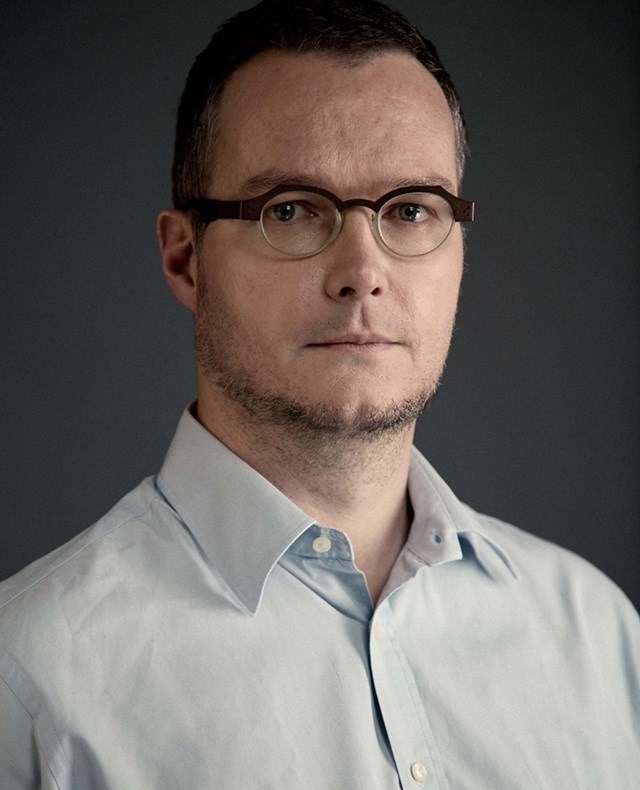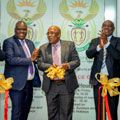Marketing & Media trends
Industry trends
BizTrends Sponsors
#BizTrends2017: Radio still thriving in a digital world

The reality is far from the hype of the corpses of industries stacked in Messrs Zuckerberg, Brin and Kalanick’s basement chest freezers. I am truly hard-pressed to think of an industry that has been killed by digital. Yes, individual companies have disappeared, died, been killed, but I struggle to think of an entire industry. Some may point to newspapers and print, yet thousands of broadsheet pages are still printed despite the evident turmoil that that sector is experiencing.
The truth of digital’s impact on the world is that it has been fundamentally transformative. Digital has indisputably changed everything from how we meet our partner to how we consume content, hail a cab and build our businesses using advertising. It is in this spirit of transformation that I reflect on what digital means for radio.
As we step into this reflection, it’s worth pausing to consider what we mean by radio. Do we mean the act of broadcasting sound using a signal transmitted across airwaves to a receiver? Or is radio actually the act of listening to sound, that moment where you disappear into a world of sound and language that has been created for you?
In my world as I grapple with what digital means for our future strategy, I take the most expansive view, namely how is digital transforming the manner in which audiences relate to content and what from our traditional radio capabilities enable us to be effective in this world? It is with that expansive view in mind that I get most excited about the transformative impact that digital has on what radio means in the current context.
In the current South African landscape there is little to suggest that digital has impacted significantly on the listening patterns of the general population. Time spent listening (TSL) to radio, as well as the penetration of radio as a media type, remains incredibly robust and largely stable. Indeed recent radio measurement has shown increased TSL in South Africa.
However, there’s no doubt that it will change. The experience of the US and UK tells us that while overall penetration of radio will remain high, the time spent listening to traditional terrestrial radio (as opposed to podcasts, streaming audio, streaming radio and audio books) will decline over time. Of course, South Africa is different to those markets in the sense that commercial radio has remained deeply entrenched in local markets and is programmed to local relevance – a lot of which was lost in the highly networked approach to radio in those territories.
What this will ultimately mean is still uncertain. As audiences fragment over a myriad of media types, many chase the holy-programmatic-grail of the hyper-defined market that fits our preconceived view of who purchases our products. Yet the work of Byron Sharp and others point us to the fact that the drivers of business growth are the light, occasional purchasers who almost never fit the preconceived notion of who our brand buyer is.
The audiences that gather around breakfast, drive and weekend radio will be more and more important for people looking to build their businesses.
Digital catalyst
There is much debate as to whether those smaller radio audiences in developed countries are now more or less valuable. There is no doubt that the relative cheapness of digital advertising has put enormous downward pressure on the revenues of traditional media players, but there is not sufficient space here nor do we yet have enough information to adjudicate this issue of value, other than to say classical economics tells us that scarcity drives demand and certainly mass audiences are going to become a rarer beast over time. Aside from this complex question though, there is much to be excited about the catalyst that digital has been for our industry.
Digital has enabled us to make the ephemeral more permanent and more discoverable. My first years in radio included many phone calls from people who’d missed interviews and wanted to hear them. We spent a fortune burning CDs and couriering them to those souls proactive enough to contact their favourite radio station and the rest of the world never even got to know what they’d missed.
Now radio stations are pursuing atomisation strategies, breaking down their 24/7/365 audio streams into discrete pieces of audio (and sometimes converting them into text stories), thus making their content discoverable long after it was broadcast. It offers the ability to build new audiences, deepen relationships with existing audiences and provide advertisers with content specific environments in which they can build brand associations.
It is a strategy pursued by global players like NPR and BBC and one that we’ve shamelessly followed building EWN from a news service that lived inside radio stations, to a stand-alone digital brand reaching millions.
Listening renaissance
The act of listening is enjoying a renaissance, well perhaps not to each other, but certainly to a voice put into our ears via cute little white buds or extravagantly expensive headphones. Either way, people are consuming more and more audio content and this is a good thing for radio people who’ve dedicated their lives making content for people to listen to. Audio book sales are exploding and so are podcasts.
The scope to explore topics in-depth has created an entire new component to the radio world. One that has been expertly explored and exploited by an array of organisations, including my personal favourite, New York Public Radio’s Freakonomics.
Content experiences
Digital is now also enabling audiences to reassemble talk content into experiences that are unique to their own interests whilst remaining true to the joy of surprising, serendipitous discovery that has always driven radio listening. NPR One is undoubtedly one of the leading experiences in this space, cleverly using digital engagement to craft a listeners experience whilst occasionally dropping in a surprise so that the filter bubble never becomes suffocating.
Multi-dimensional relationships
With all these tremendous changes, explosion in platforms and radio stations now having multiple touchpoints with their audiences, it is imperative for radio owners to find a metric to represent the loyalty of their audiences across broadcast, podcasts, online streaming, engagement with digital content and social media, to create a consolidated picture of audience engagement. A radio-only view no longer represents the depth and multi-dimensional nature of the relationship.
The transformation is profound, ongoing and exhilarating. There is no doubt that it poses challenges for traditional business models, but equally, it has opened the space for all sorts of new ways to connect with audiences. For radio people who have always thrived on creating connections, there is no better time to be in the business.
Equally, for business owners who’ve relied on us to provide channels to new markets, we can now offer them more touchpoints, more insight and more carefully created environments bringing together the best of reach and depth.
Yes, we need to find ways to appropriately value that audience so that we can sustain that connection, but I remain optimistic that that will come as all of us who are committed to building businesses, sustaining democracy and strengthening social cohesion, slowly figure out how digital is transforming our world.










